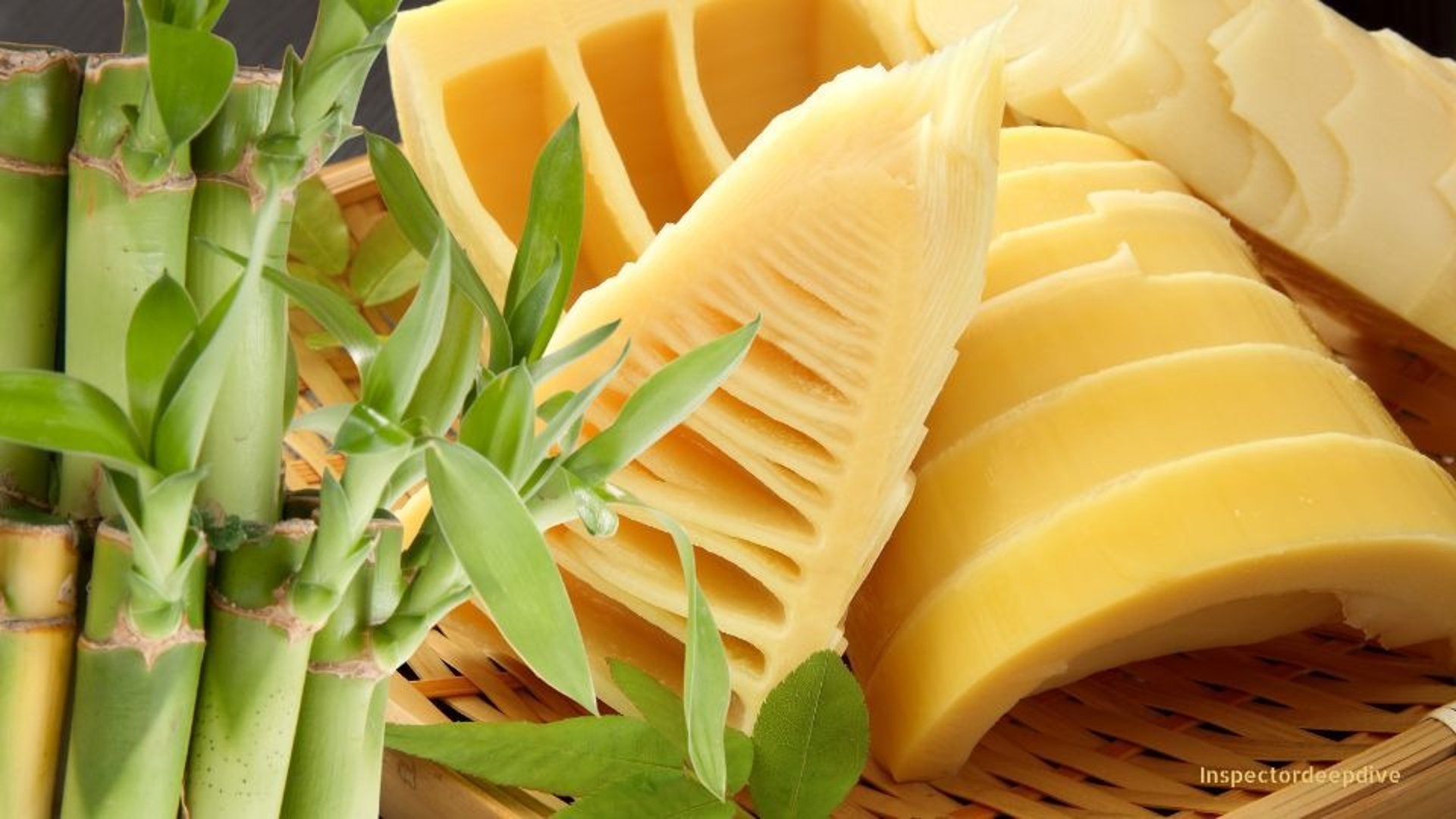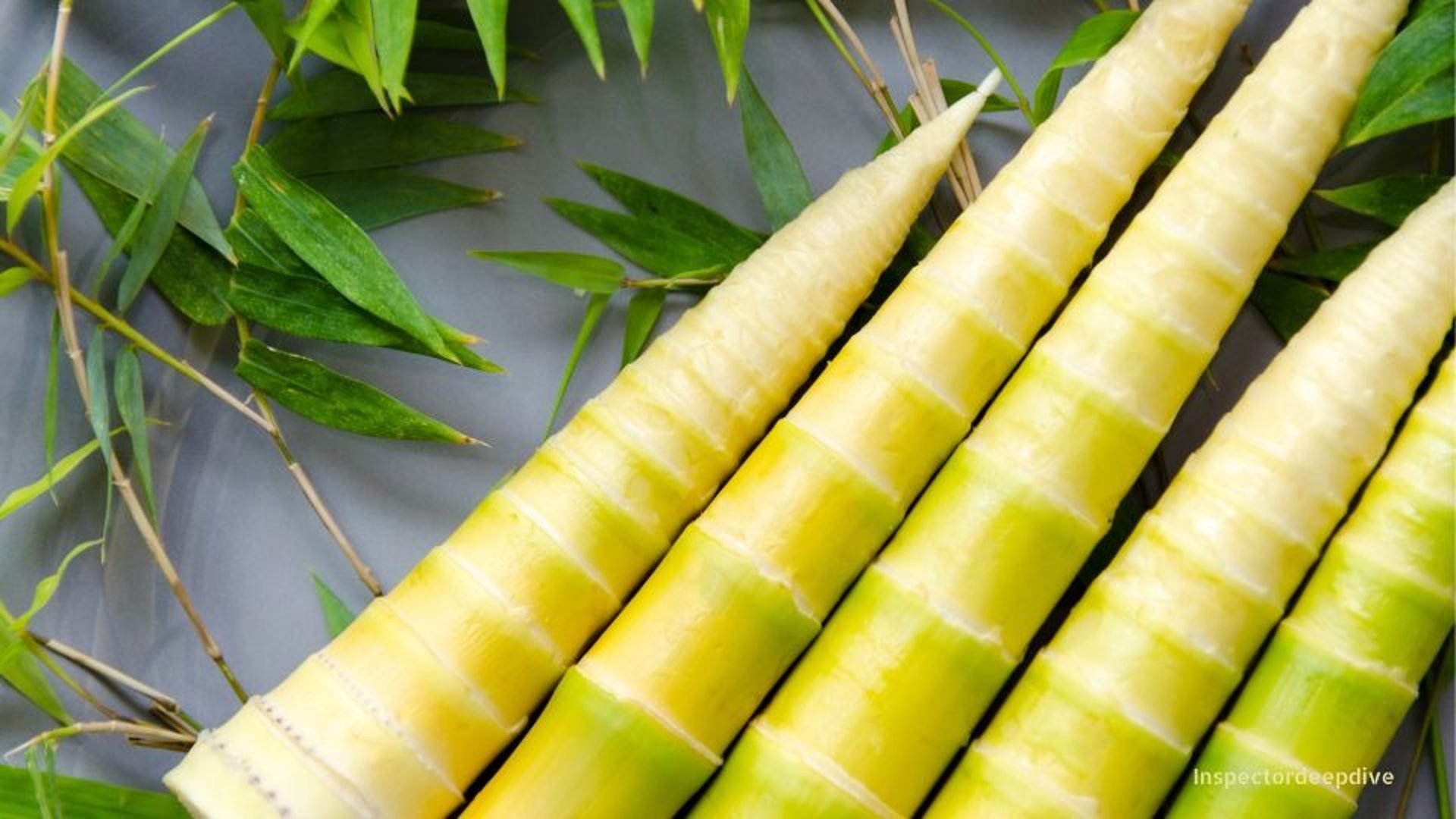
Bamboo Shoots: A Scientific Look at Nutrition, Composition, and Context

Bamboo Shoots: A Scientific Look at Nutrition, Composition, and Context
Bamboo shoots are the young, tender culms of bamboo plants, harvested before they harden into woody stalks. Common in Asian cuisines especially Chinese, Japanese, Thai, and Indian diets they are increasingly available worldwide in fresh, canned, and dried forms.
This is not a claim of superiority or cure.
It is an examination of what bamboo shoots contain, how they behave, and what science observes.
Nutritional Breakdown: Bamboo Shoots (Raw, per 100g average)
Energy: 27 kcal
Low caloric density makes them a voluminous addition to meals without significant energy contribution.Water: 91 g
High water content contributes to hydration and texture; typical of non-starchy vegetables.Protein: 2.6 g
Contains all nine essential amino acids in small amounts, with lysine as the most prominent—though not a complete protein source on its own.Total Fat: 0.3 g
Negligible fat content.Saturated: 0.08 g
Monounsaturated: 0.05 g
Polyunsaturated: 0.12 g (including linoleic acid)
Minimal lipid fraction; no cholesterol (plant-based).
Carbohydrates: 5.2 g
Primarily composed of structural polysaccharides.Dietary Fiber: 2.2 g
Mostly insoluble fiber (cellulose, hemicellulose), supports stool formation and gut transit.Sugars: 1.2 g (glucose, fructose, sucrose)
Naturally occurring simple sugars in trace amounts.Ash (mineral content): 1.2 g
Represents total inorganic matter—indirect measure of mineral load.
Vitamins
Vitamin B6 (Pyridoxine): 0.06 mg (3% RDI*)
Involved in amino acid metabolism and neurotransmitter synthesis; marginal but present.Vitamin C: 10 mg (11% RDI)
Antioxidant role; supports collagen formation and iron absorption; levels decrease with cooking.Vitamin E (Alpha-tocopherol): 0.3 mg (2% RDI)
Lipid-soluble antioxidant that protects cell membranes from oxidative damage.Folate (B9): 18 µg (9% RDI)
Essential for DNA synthesis and red blood cell formation; particularly relevant during periods of growth.Choline: 6.1 mg
Precursor for acetylcholine (a neurotransmitter) and phospholipids in cell membranes.
No significant levels of vitamins A, D, K, or B12 detected. Not a source of fat-soluble vitamin activity.
Minerals
Potassium: 533 mg (11% RDI)
Supports fluid balance, nerve signaling, and counteracts sodium’s effect on blood pressure.Phosphorus: 43 mg (6% RDI)
Structural component of bones and teeth; involved in energy transfer (ATP).Magnesium: 12 mg (3% RDI)
Cofactor in over 300 enzyme systems, including those regulating muscle and nerve function.Calcium: 12 mg (1% RDI)
Minimal contribution; far below dairy or leafy green sources.Iron: 0.5 mg (3% RDI)
Non-heme iron; bioavailability influenced by dietary enhancers (e.g., vitamin C) and inhibitors (e.g., phytates).Zinc: 0.4 mg (4% RDI)
Supports immune function and wound healing; modest presence.Copper: 0.1 mg (11% RDI)
Cofactor in redox enzymes like cytochrome c oxidase and superoxide dismutase.Manganese: 0.2 mg (9% RDI)
Required for bone development and metabolic enzyme function; concentrated in mitochondria.Selenium: 0.7 µg (1% RDI)
Trace selenium supports antioxidant defense via glutathione peroxidase.
Also contains trace amounts of molybdenum and boron elements with uncertain essentiality in humans.
Phytochemicals (Bioactive Compounds)
Phenolic Acids: Ferulic acid, p-coumaric acid, caffeic acid (15–30 mg/100g dry weight)
Associated with antioxidant effects in vitro; may reduce free radical propagation in model systems.Flavonoids: Orientin, isoorientin, vitexin
Plant pigments studied for anti-inflammatory and cellular protection properties under lab conditions.Sterols: Beta-sitosterol, campesterol
May interfere with cholesterol absorption in the gut; clinical relevance varies by individual.Cyanogenic Glycosides (raw only): Taxiphyllin, dhurrin
Natural plant defense compounds that can release hydrogen cyanide when ingested uncooked. Deactivated by boiling.
Research (as of 2025)
Digestive Function: Insoluble fiber increases fecal bulk and may support regular bowel movements. Some evidence suggests modulation of microbial populations, though human trials remain limited.
Satiety and Meal Volume: Low energy density and high water/fiber content may contribute to fullness, potentially reducing overall calorie intake in mixed meals.
Blood Pressure Regulation: Potassium content may help maintain vascular fluid balance, especially in individuals with high sodium intake.
Oxidative Stress Markers: Phenolic extracts show free radical scavenging ability in test tubes and rodent models. Direct translation to human health outcomes is not established.
Inflammation Pathways: Certain compounds inhibit COX-2 and other inflammatory mediators in isolated cells. No clinical confirmation of systemic anti-inflammatory effect.
Immune Cell Activity: Zinc and copper are necessary cofactors in immune processes. Deficiency impairs immunity; excess intake does not enhance it beyond sufficiency.
No study claims bamboo shoots prevent, treat, or cure any disease.
Culinary Use and Preparation
Fresh bamboo shoots require thorough boiling (30–60 minutes) to hydrolyze cyanogenic glycosides into harmless compounds. Failure to cook properly may result in acute toxicity.
Canned and commercially processed shoots undergo this step during production and are safe to eat without further preparation, though heating improves integration into dishes.
They have a neutral flavor and crisp texture, making them suitable for stir-fries, soups, curries, pickles, and salads.
Safety Notes
Never consume raw fresh bamboo shoots.
Cooking reduces both antinutrients and some bioactive compounds.
Allergic reactions are rare but documented.
Farming practices vary—some operations use sustainable harvesting; others may involve land-use concerns.
Scientific Research (2024–2025)
Isolation of fiber fractions for potential prebiotic use.
Extraction of phenolics for natural food preservation.
Observational data on metabolic markers among populations with habitual intake.
No large-scale human intervention trials confirm therapeutic application.
Conclusion
Bamboo shoots are a low-calorie, fibrous vegetable with measurable nutrients: potassium, fiber, vitamin B6, and minor phytochemicals. They contribute to dietary variety and provide modest micronutrient input.
They are not required in the diet.
No unique physiological benefit has been isolated.
But within diverse eating patterns, they represent one of many plant-based sources of functional components.
© 2025 food.InspectorDeepDive.com. All rights reserved. Content may not be copied or republished without permission.
This article is for informational purposes only. InspectorDeepDive.com does not provide medical advice. Always consult a licensed healthcare provider before making dietary or health decisions.
